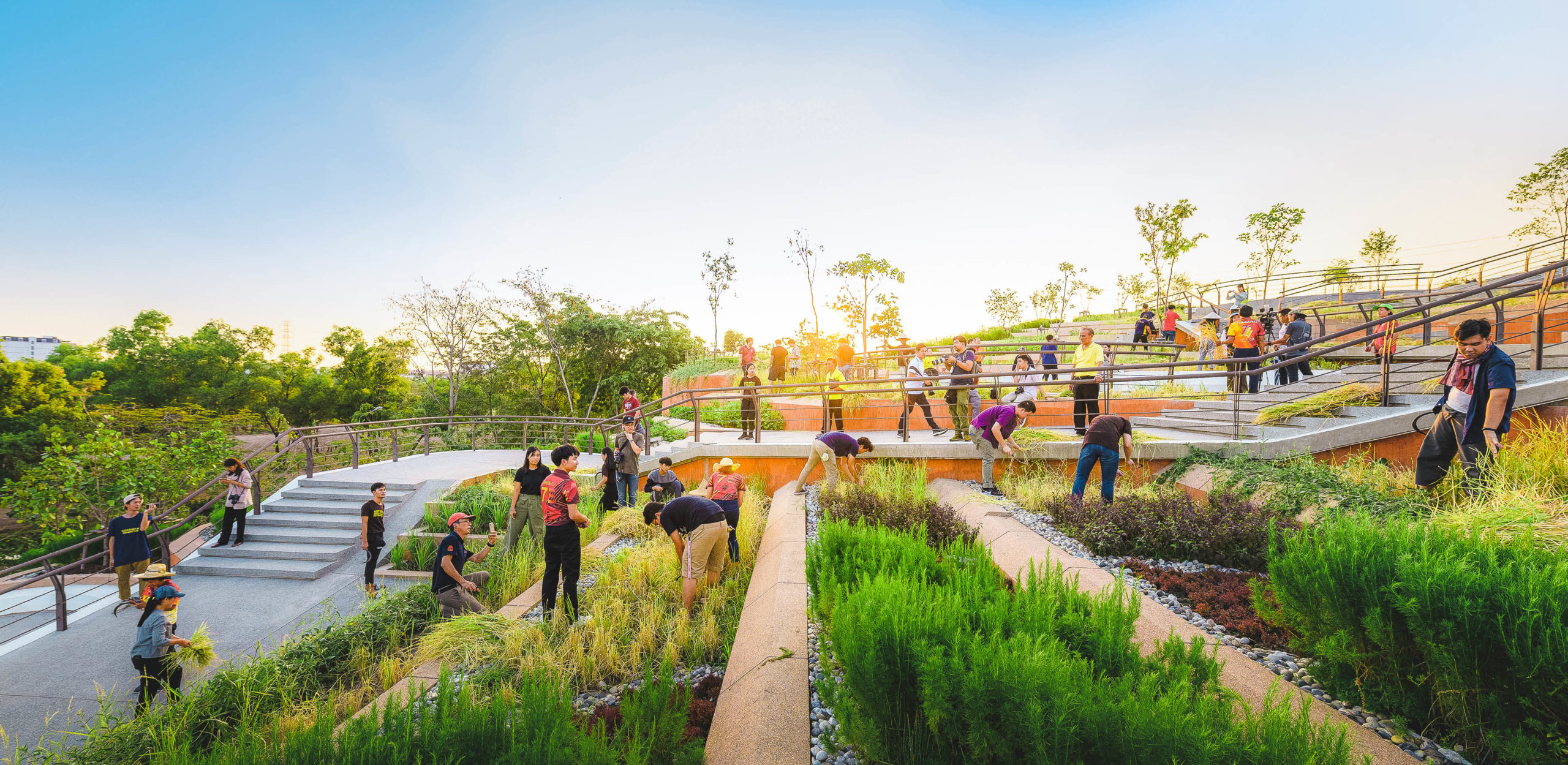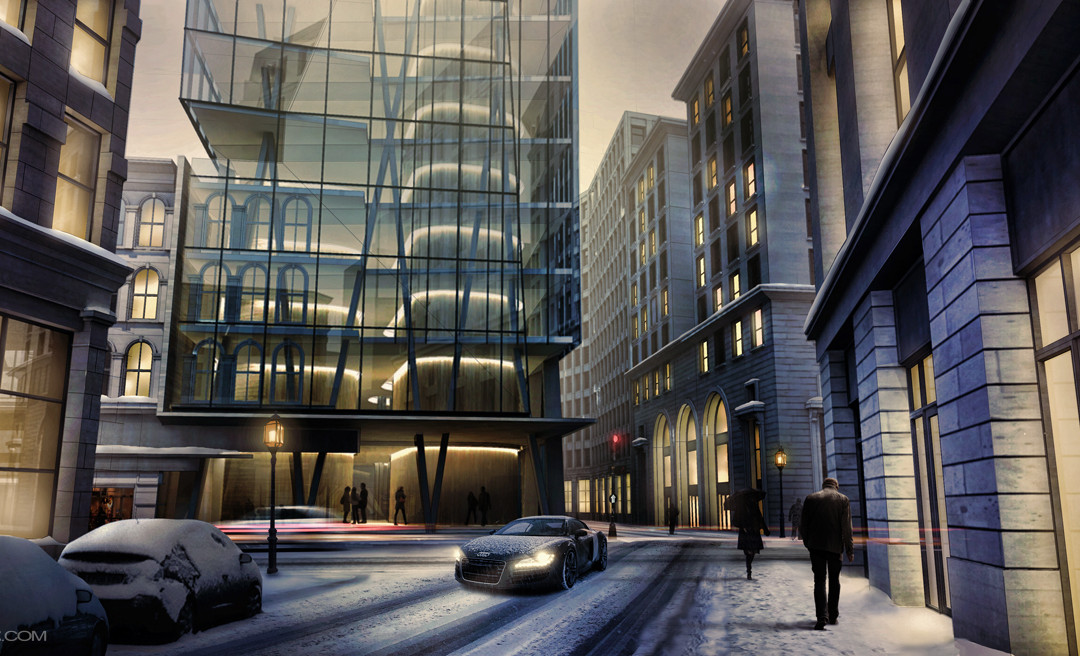Architects: Want to have your project featured? Showcase your work by uploading projects to Architizer and sign up for our inspirational newsletters.
There’s a new kid on the block, and its name is agritecture. A portmanteau of the words agriculture and architecture, agritecture began simply, as the title of the design planning business founded by entrepreneur and strategist Henry Gordon-Smith. Since 2011 Gordon-Smith and the team at agritecture have studied the symbiotic relationship between humans and the natural world through the lens of urban architectural development. The company strives to support the integration of farming techniques into typical urban environments with the goal of preserving our natural resources while developing land for further human inhabitance.
Farmland accounts for over 50% of the habitable landmass of the world, with wild plant life making way for the crop fields and the cattle land necessary to sustain the ever-growing population and the demand for specific crops such as palm oil. Thankfully things are changing, and while humanity explores new strategies and technologies for crop production, many people, particularly architects, ponder how we can restore the biodiversity we have lost during the culling of such vast amounts of wildlife.
Insects, small rodents and birds rely on biodiversity in their natural environments to thrive. Without a broad spectrum of plant life to feed on, insects like bees and butterflies become extinct, and the birds, who are their natural predator, must migrate to new areas to find a reliable food source. This is why there are fewer small birds in cities or urban areas — fewer plants, fewer bugs, fewer birds. Ten years after term was first coined, agritecture has become an important descriptor in urban planning. No longer just the amalgamation of two words, agritecture now refers to the art of integrating farmland and urban landscapes.
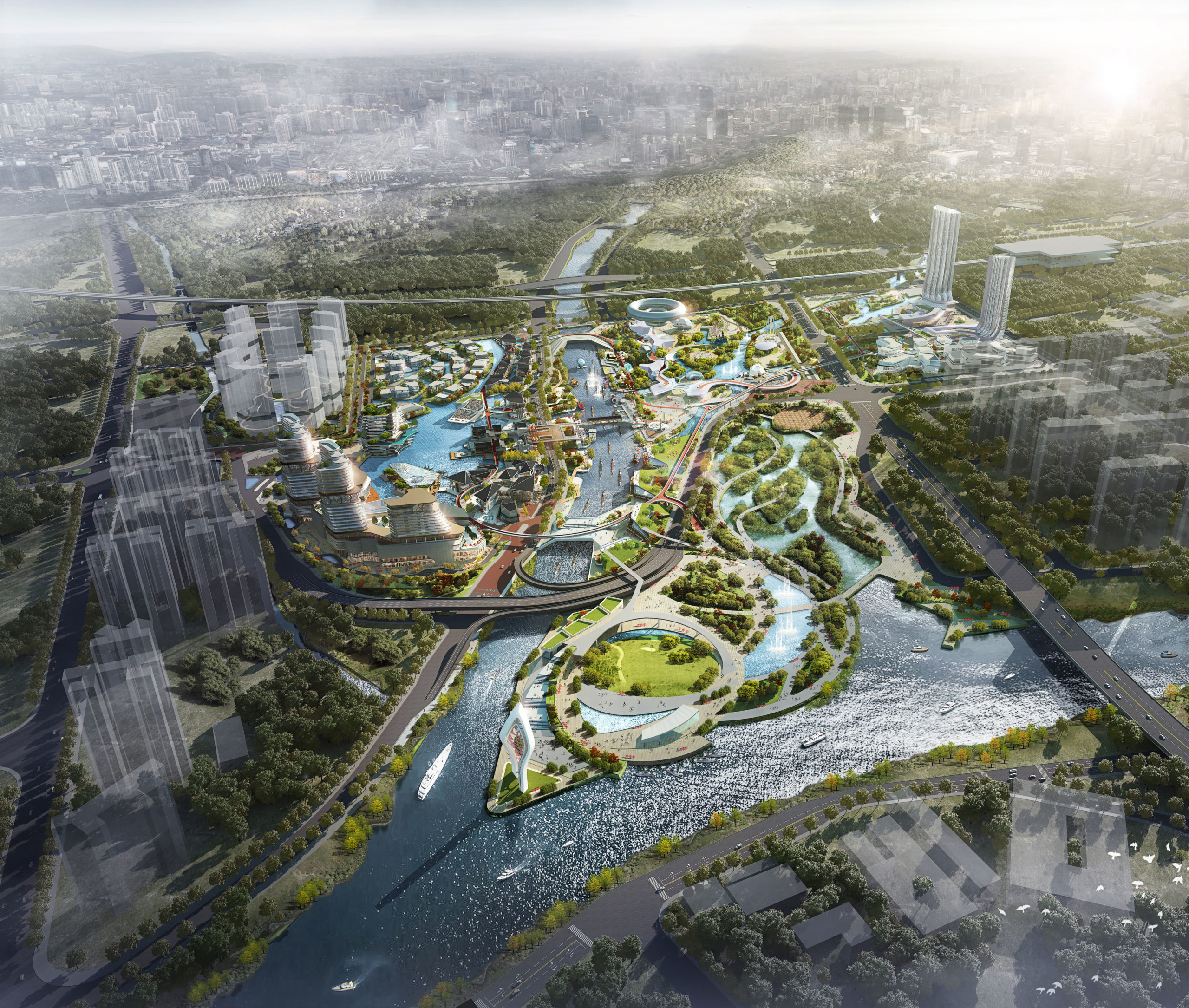
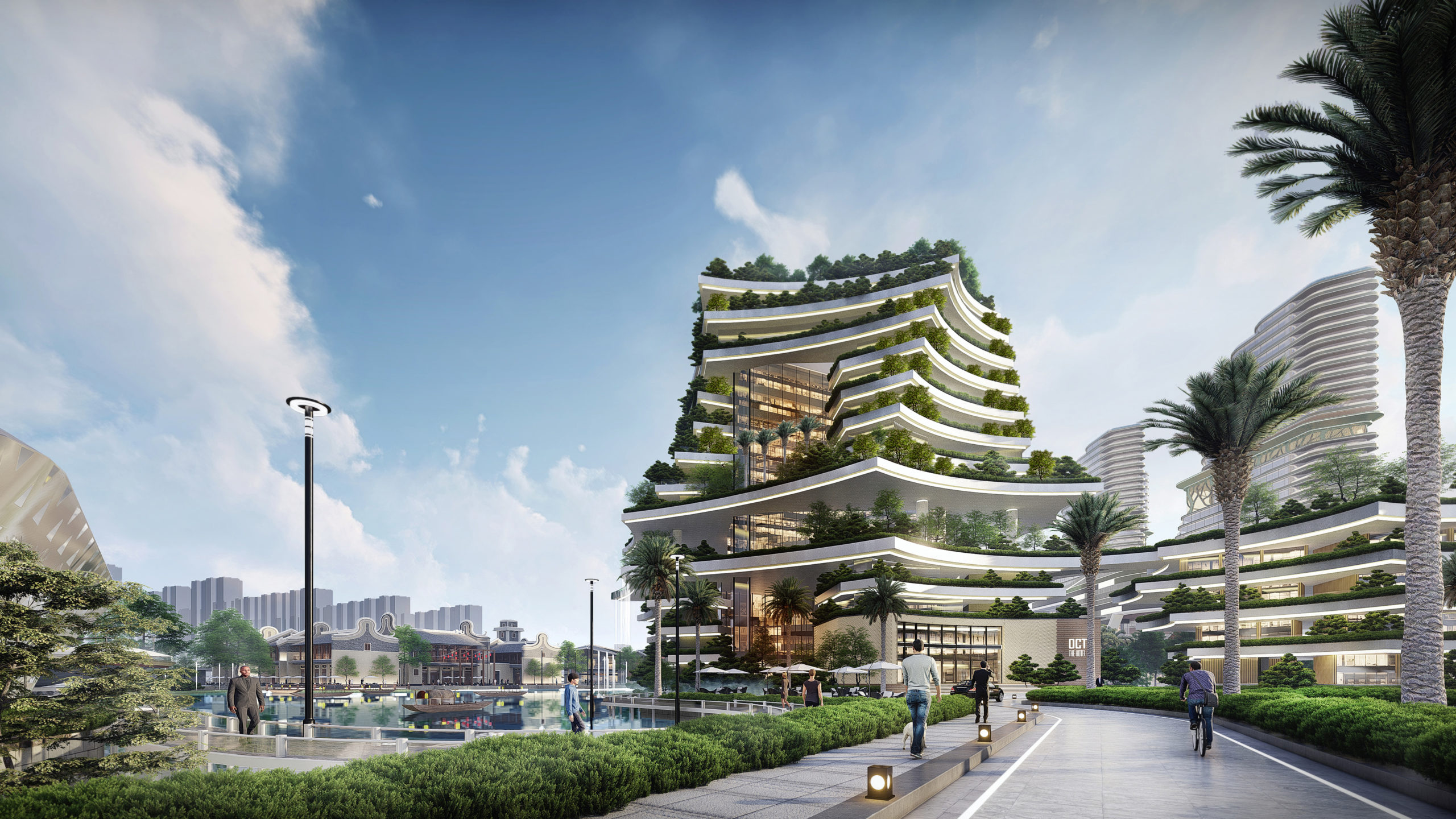
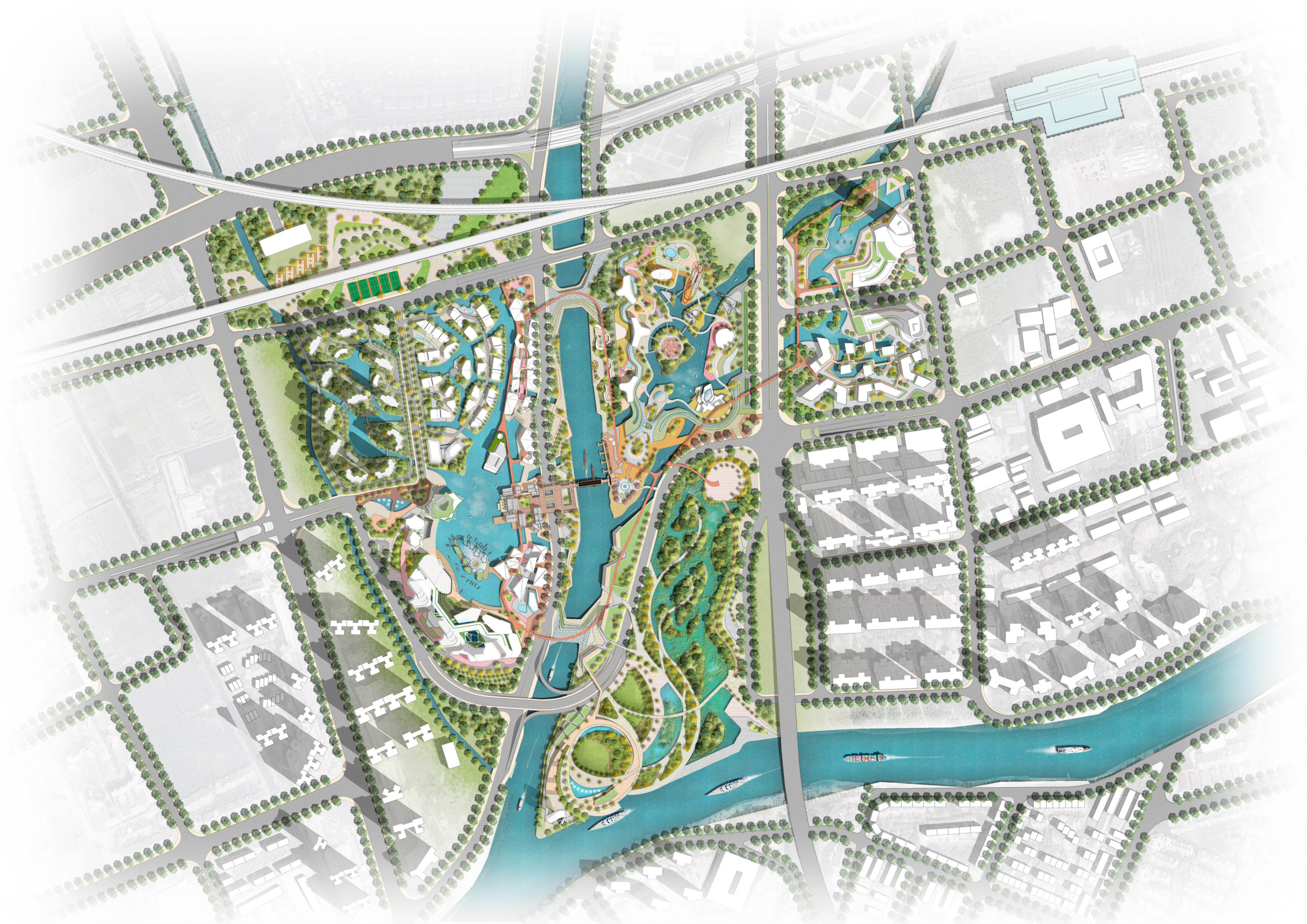
Zhongshan OCT Harbour by LWK + PARTNERS, Zhongshan, China Images by LWK + PARTNERS
We often take for granted that cities and urban areas sacrifice their biodiversity for their architecture and urban planning. However, thanks to Henry Gordon Smith and many others like him, architects are challenging the status quo and endeavoring to construct urban landscapes that are sites of extreme biodiversity and havens for wildlife to protect plant and animal species for future generations.
One example is China’s Zhongshan OCT Harbour, master-planned and designed by LWK + PARTNERS. The plan is envisioned as an urban cultural hub for the community, incorporating vernacular Lingnan aesthetics river ecology with a determination to create a sustainable urban environment.
The OCT Harbour will include a theme park, retail areas, residences, hotel accommodation, entertainment facilities and offices entwined with grassland, farmland and waterways, each with its own ecosystems. The project aims to be a commercial, recreational and living experience on a rich, eco-friendly landscape. The masterplan is an example of deep respect for the revival of nature in urban environments while honoring local culture and amplifying a promise of prosperity for the future.
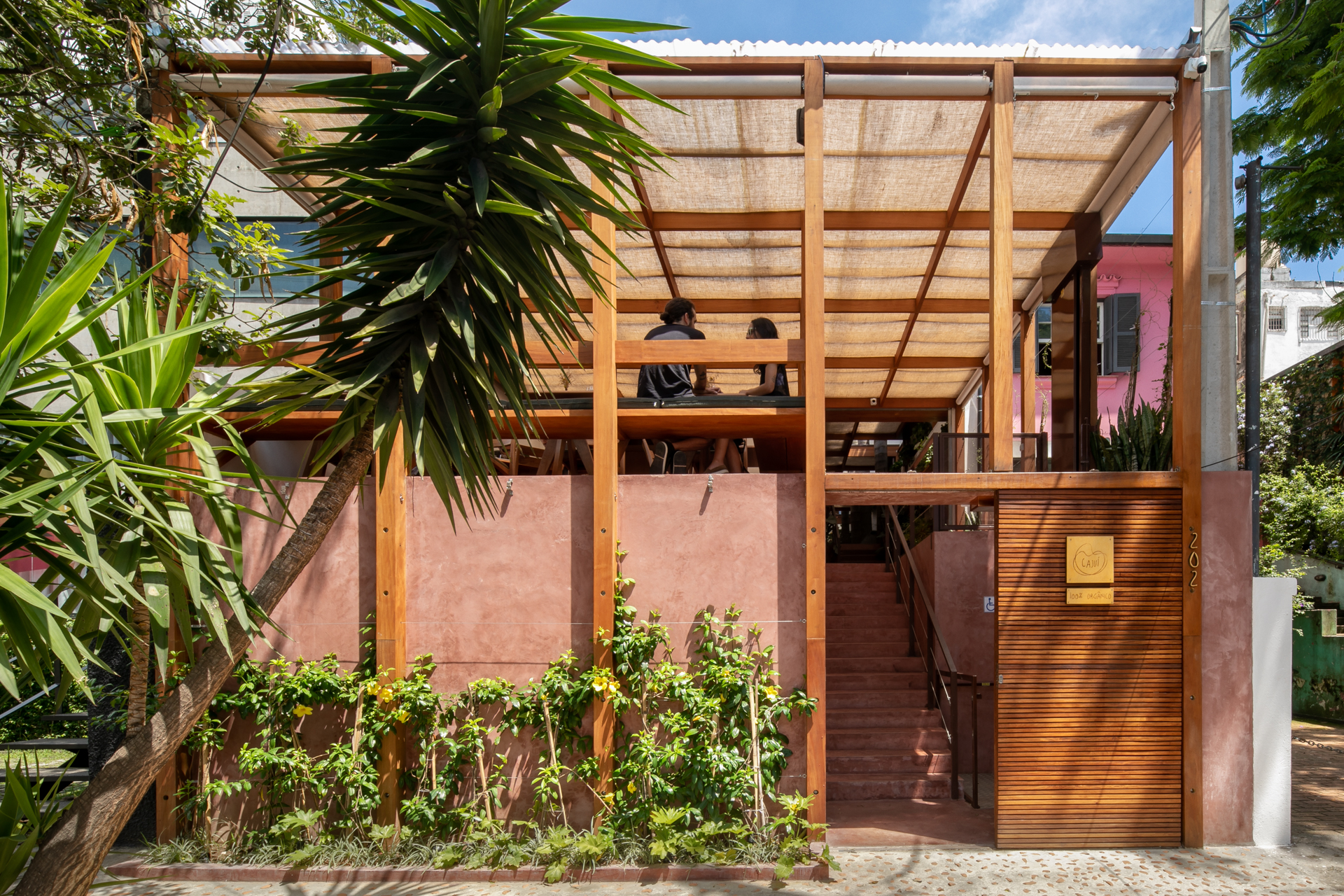
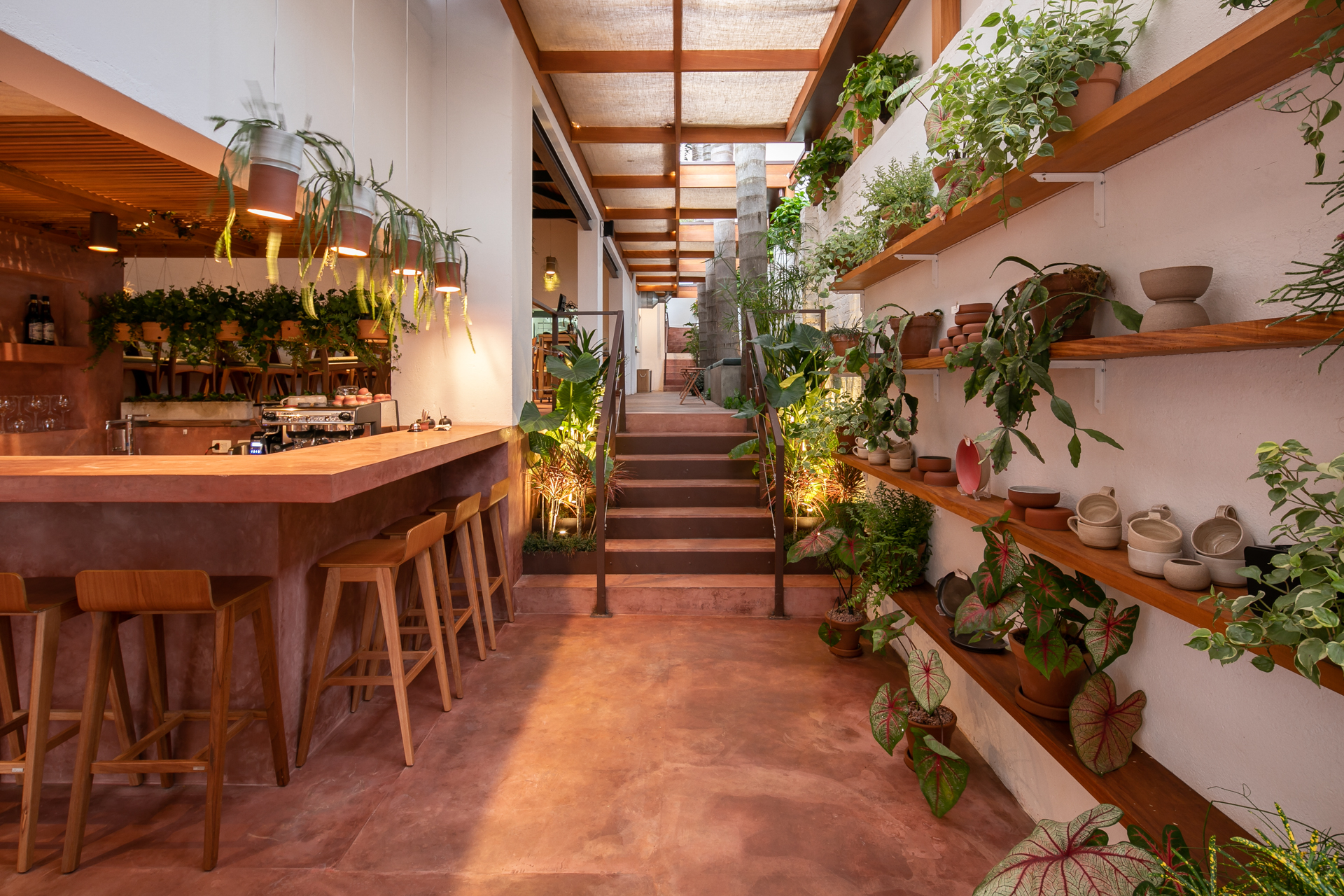
Cajuí Restaurant by VAGA, São Paulo, Brazil Photographs by Pedro Napolitano Prata
The hospitality industry plays a considerable role in regenerating biodiverse climates within urban areas. With the freshness of ingredients being paramount to enticing restaurant offerings, hospitality venues are exploring ways to reduce farm-to-table timings. Restaurant venues want to give their customers local, fresh produce without exponentially increasing their costs. One way to do this is by introducing agritectural solutions.
Cajuí Restaurant by VAGA set in São Paulo is one of many vegan restaurants worldwide that prides itself on its fresh, local ingredients grown on-site. The beautiful restaurant with its wooden framed structure is filled with plant life, but the team has taken agritecture one step further by including large plant beds used to grow seasonal ingredients for the menu daily. It is an approach that supports an exciting and diverse menu; it also allows chefs to grow indigenous ingredients to the area, increasing their demand and ensuring they do not become extinct.
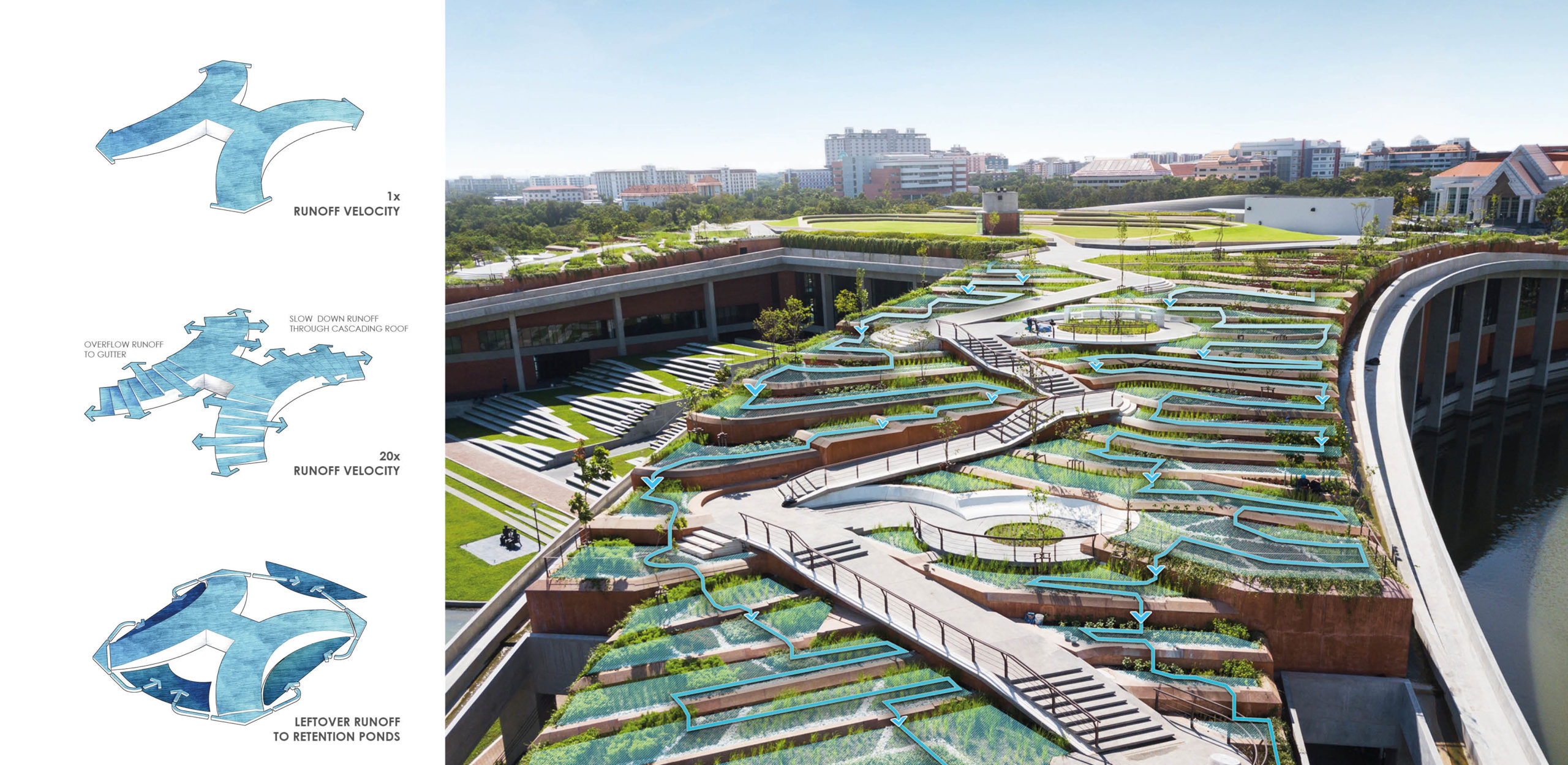
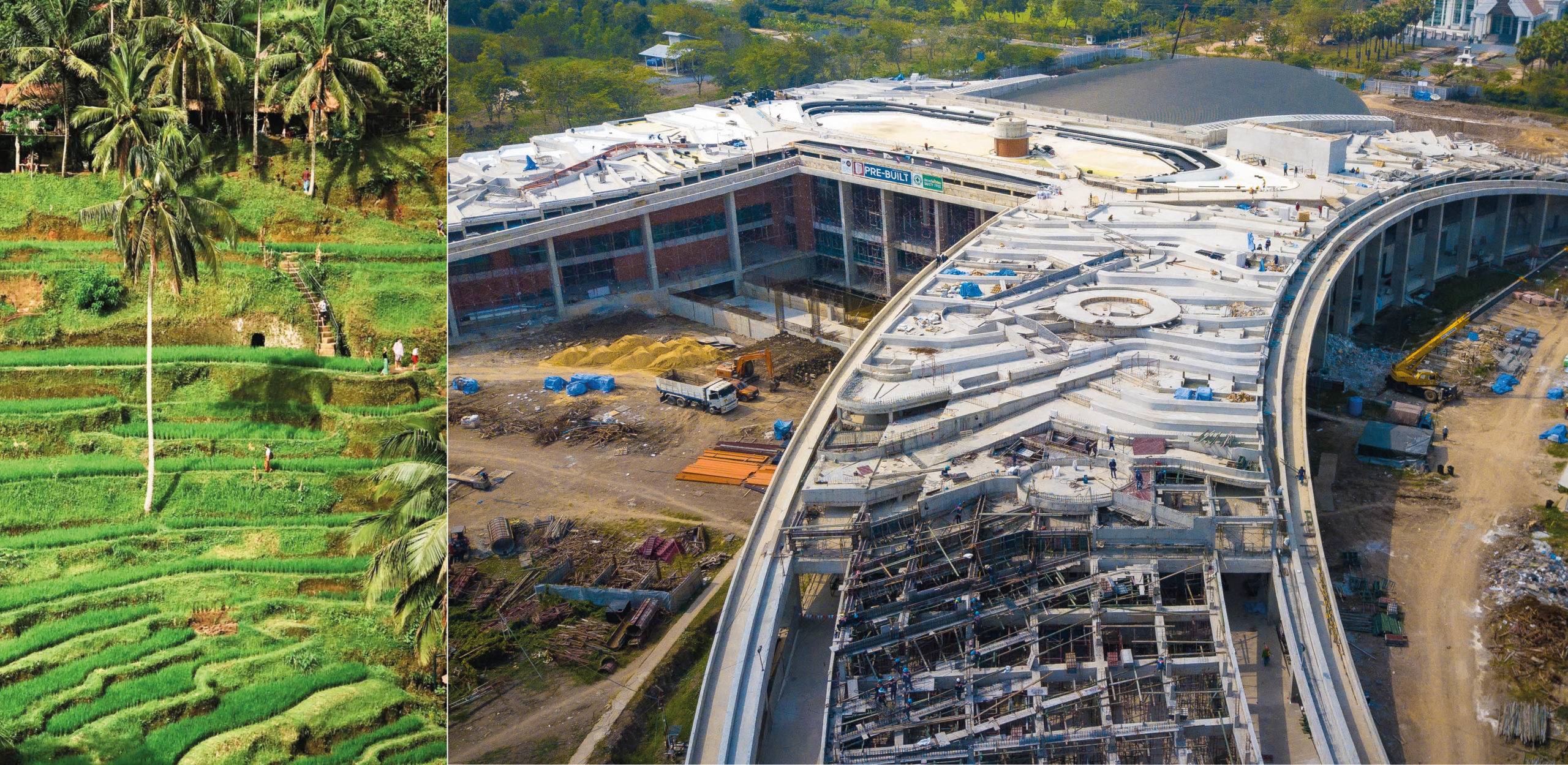
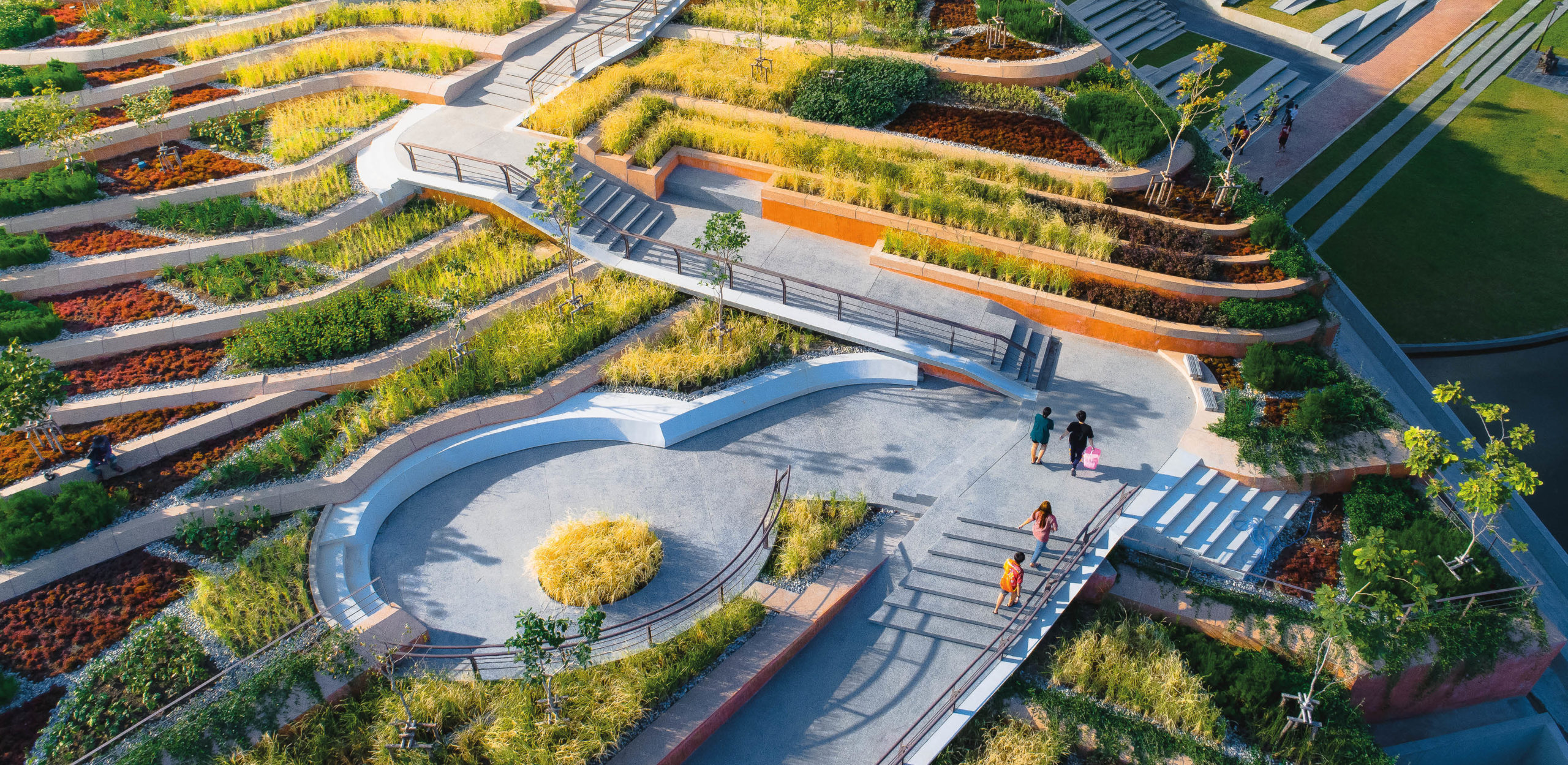
Thammasat University Urban Rooftop Farm by LANDPROCESS, Tambon Khlong Nung, Thailand
Project of the Year 2020; Jury Winner & Popular Choice, 2020 A+Awards, Public Park
One of the great perpetrators of harm to biodiversity in urban environments is pollution. Plant and wildlife fail to thrive in polluted areas, however as we now know, flora and fauna (somewhat ironically) also play a role in reducing urban pollution. This conflicting reality is one that many architects are investigating. By incorporating agritectural practices within their designs, architects can include particular species of plants and wildlife that thrive in challenging urban areas. This way, they can restore a harmonious balance between urban environments and biodiversity.
Cities across Asia have encountered a plethora of problems as a direct result of the loss of biodiversity and extreme levels of pollution in the region. Unregulated urbanisation at unprecedented speeds has resulted in imbalances that have affected what the land can provide for the needs of the population. Paired with climate change and a vast reduction in the number of fish being caught by locals in the once plentiful fishing regions of Southern Asia, food shortages are becoming commonplace during certain seasons. The fear of widespread food scarcity is a reality that, without intervention could sweep across the Asian continent.
Determined to tackle the ever-pressing agricultural problem, Thammasat University have commissioned an adaptive climate solution adopting agritectural practices and taking them to the next level. The university now incorporates Asia’s largest organic rooftop farm as part of their new Thammasat University Urban Rooftop Farm campus —lovingly referred to by the acronym TURF. Taking inspiration from the traditional rice terraces that made the region so fruitful in the beginning, the earthwork of rice terraces and modern green roof technology absorbs, filters and slows down runoff twenty times more efficiently than conventional rooftops. Aside from crop production the campus also stores unused rainwater for the drought seasons. The focus of the project is not only to feed and restore nature to an urban environment but it is a space that educates future generations on the traditional ways of Thailand enabling them to remember and utilise past traditions to facilitate a healthy society in the future.
Architects: Want to have your project featured? Showcase your work by uploading projects to Architizer and sign up for our inspirational newsletters.
